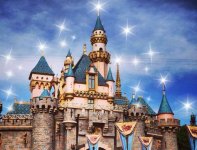How to capture an image of fast moving traffic like this ? http://cdn.stupiddope.com/wp-content/uploads/2013/08/17th-Street-Bridge.jpg
Is it mixture of HDR and ND filter long exposure ?
Is it mixture of HDR and ND filter long exposure ?
One of the simplest things in photography: 1) put your camera on a tripod; 2) set the camera in a "night mode".
Or, do a little "hit and miss" test: 1) set the camera to "manual mode"; 2) set ISO manualy to the value of 100 or 200 or 400; 3) set the wperture to the value of 8. Try with different exposure time values, from 1 sec to 30 sec. Use some wide angle prime lens, or a kit zoom set to, say, 18mm..
Author of that photo has probably used kind of "trick prism" filter (which turns the accentuated bright spots into "sparkling stars").
It's OK - i fully trust you that you did not use the trick prism. I only think that this prism could emphasize the "sparkling" effect in photos such as this "traffic in the evening"...

